My Tita Delie's coconut macaroons were legendary at every family gathering. I can still picture her in her tiny kitchen, wearing her favorite floral apron, carefully measuring ingredients by eye rather than cup: a skill she developed over decades of baking these treats.
She'd always insist on using fresh coconuts from our backyard, which my cousins and I would help grate by hand (though today's desiccated coconut works just fine). The secret to her perfectly golden macaroons wasn't just in the ingredients, but in how she'd tap each filled muffin tin exactly three times on the counter before baking.
While my version might not quite match the magic of Tita Delie's kitchen, these macaroons capture that same comforting sweetness that made everyone linger around her cooling rack, hoping to snag an extra piece when she wasn't looking.
Jump to:
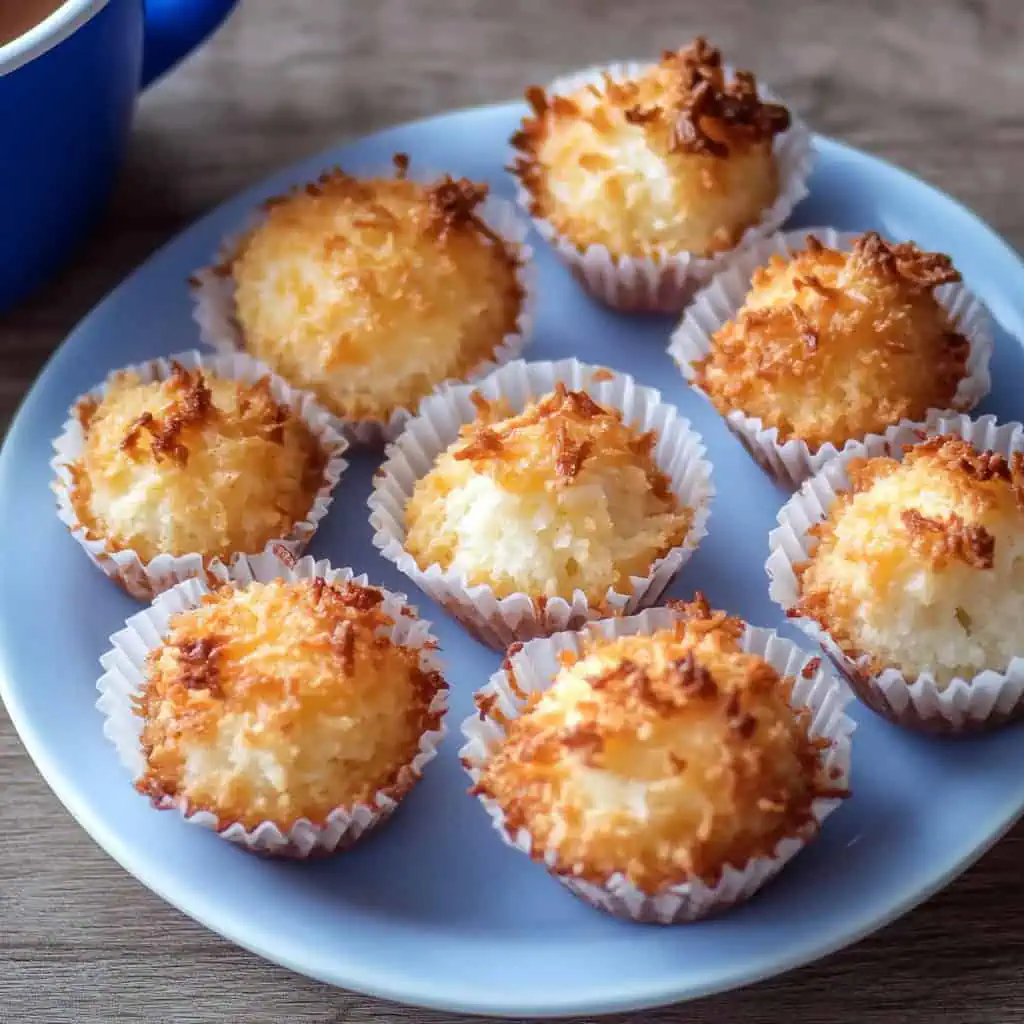
Why You'll Love This Recipe
These Filipino-style coconut macaroons capture the essence of Philippine dessert-making with their golden-brown tops, moist centers, and rich coconut flavor. Unlike their French counterparts, these macaroons are deliberately more substantial and satisfyingly sweet, making them perfect for pairing with afternoon tea or coffee.
Ingredients
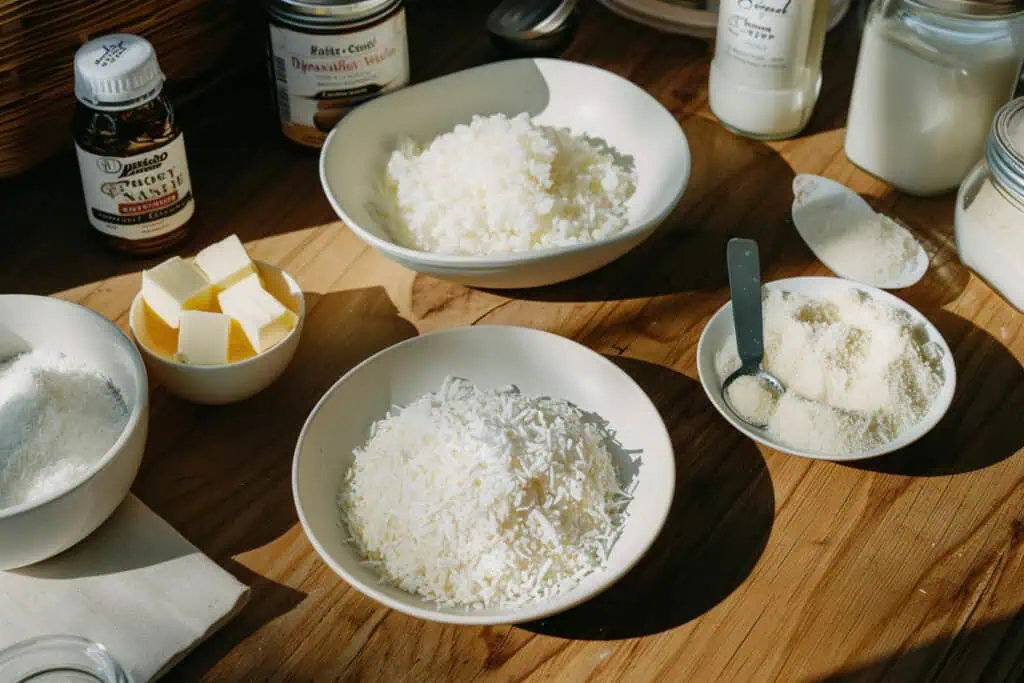
- 400g desiccated coconut
- 400g condensed milk
- 1 teaspoon vanilla extract
- ½ cup unsalted butter, room temperature
- ½ cup brown sugar
- 4 large eggs
Equipment
- Stand mixer or hand mixer: Essential for properly creaming butter and thoroughly mixing ingredients to achieve the right texture and consistency.
- Large mixing bowl: Provides ample space for combining ingredients without spilling, especially important when folding in the coconut.
- Mini muffin tin: Creates the perfect shape and size for traditional Filipino macaroons. The small cavities help maintain moisture during baking.
- Mini muffin paper liners: Prevents sticking and makes for easy removal and serving. Also adds a decorative touch to your finished macaroons.
- Measuring cups and spoons: Ensures precise measurements for consistent results every time you bake.
- Rubber spatula: Perfect for scraping bowl sides and gently folding in coconut without deflating the mixture.
- Wire cooling rack: Allows air to circulate under the macaroons, preventing soggy bottoms and ensuring even cooling.
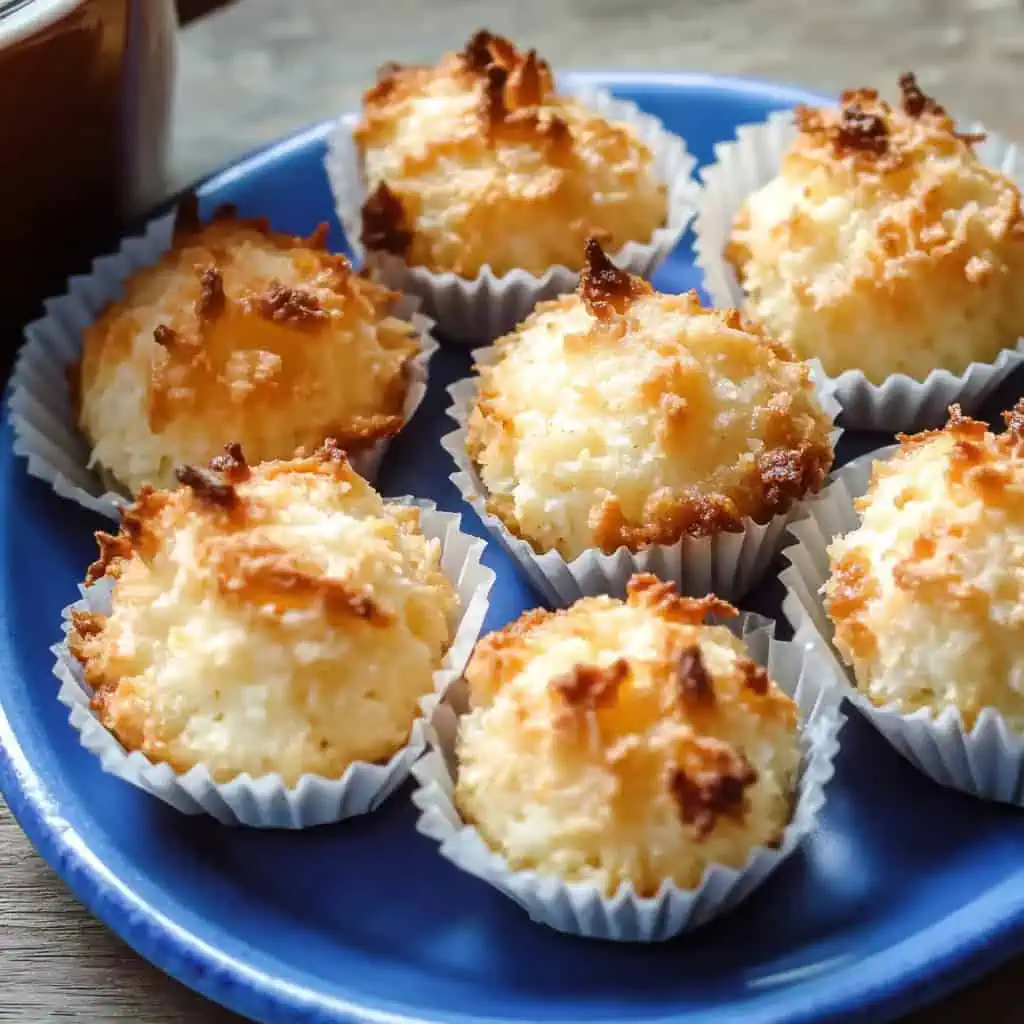
How To Make
- Begin by gathering all your ingredients and setting your butter out to reach room temperature - this will take about 30 minutes. Meanwhile, preheat your oven to 180°C (350°F) and line your mini muffin tin with paper cups.
- Once your butter is softened, cream it together with the brown sugar using an electric mixer on medium speed. Keep mixing for 3-4 minutes until the mixture becomes light and fluffy. It should look pale and creamy when ready.
- Break your eggs into the mixture one at a time, beating well after each addition. Pour in your condensed milk and vanilla extract, then mix everything until well combined. The mixture should look smooth and uniform.
- Now add your desiccated coconut gradually, using a rubber spatula to fold it in. Keep folding until all the coconut is evenly distributed throughout the batter. The mixture should be thick but still easy to spoon.
- Fill each paper-lined muffin cup about two-thirds full with your batter. Gently tap the filled muffin tin on your counter twice to remove any air bubbles.
- Place the tin in your preheated oven and bake for 25-30 minutes. You're looking for golden-brown tops - this tells you they're done. Halfway through baking, rotate the pan to ensure even browning.
- When done, remove from the oven and let the macaroons cool in the tin for 5 minutes. Then carefully transfer them to a wire rack to cool completely, which takes about 20-30 minutes. They should feel firm when touched but still have a soft center.
- To store, place in an airtight container. They'll keep at room temperature for up to 5 days, or in the refrigerator for up to 2 weeks. You can also freeze them for up to 3 months - just thaw overnight in the refrigerator when ready to eat.
Remember: perfectly baked macaroons should have a light golden-brown color on top, be slightly crisp on the outside, and remain moist and tender on the inside. Don't worry if your first batch isn't perfect - each time you make them, you'll get better at knowing exactly when they're done in your oven.

Tips from Lola's Kitchen
- Use room temperature ingredients for better incorporation. Cold ingredients don't blend as smoothly and can result in a lumpy batter.
- Don't rush the butter-sugar creaming process. This is where air gets incorporated, giving your macaroons their texture. A full 3-4 minutes of creaming creates the ideal base.
- Add eggs one at a time, allowing each to fully incorporate before adding the next. This prevents the mixture from curdling and ensures a smooth, emulsified batter.
- When folding in coconut, use a gentle hand. Overmixing can deflate the air you've incorporated during the creaming process, resulting in dense macaroons.
- Don't overfill the muffin cups - two-thirds full allows room for slight rising without overflow.
- The three-tap method on the counter isn't just tradition - it helps settle the batter and removes air pockets that could cause uneven baking.
- Rotate the pan halfway through baking for perfectly even golden tops, especially important if your oven has hot spots.
- Trust your eyes over the timer. The perfect macaroon should be golden brown on top but still maintain a slight give when gently pressed.
- Let them cool in the tin briefly before moving to a rack - they're delicate when hot and need time to set.
- For a more authentic flavor, you can add a drop of coconut essence alongside the vanilla.
Substitutions
- No desiccated coconut? Use fresh grated coconut instead, but be sure to squeeze out excess moisture first and reduce the condensed milk to 350g to maintain proper consistency.
- Condensed milk alternatives: You can replace condensed milk with evaporated milk plus ⅓ cup extra sugar, though the texture may be slightly less rich.
- Brown sugar substitutes: Muscovado or coconut sugar work beautifully and add interesting depth of flavor. Regular white sugar works too but will give a lighter color and more straightforward sweetness.
- Butter alternatives: Coconut oil (in solid form) can replace butter for a dairy-free version, enhancing the coconut flavor even further.
- Egg substitutions: For each egg, you can use 3 tablespoons of aquafaba (chickpea water) if needed for dietary restrictions. The texture will be slightly different but still delicious.
- For a dairy-free version, use coconut condensed milk and coconut oil instead of butter.
- Vanilla variations: Almond extract or coconut extract can be used instead of or alongside vanilla for different flavor profiles.
Troubleshooting
- Macaroons too dry: You likely overbaked them or used too much coconut. The ideal ratio of wet to dry ingredients is critical - ensure you're using exactly 400g each of coconut and condensed milk. Next time, reduce baking time by 3-5 minutes.
- Centers undercooked: Your oven temperature might be too high, causing the outside to brown before the inside sets. Use an oven thermometer to verify temperature accuracy and extend baking time by 3-5 minutes at a slightly lower temperature (160°C/325°F).
- Macaroons stick to liners: Let them cool completely before attempting to remove them. A properly baked macaroon should release easily once cooled. If they're still sticking, your batter might have been too wet - try adding 2 tablespoons more coconut next time.
- Macaroons spreading too much: The butter was likely too soft or the batter overmixed. Ensure butter is just at room temperature (should still hold its shape but yield to gentle pressure) and mix only until ingredients are combined. You can also chill the filled muffin tin for 15 minutes before baking.
- Uneven browning: Your oven has hot spots. Always rotate halfway through baking and consider using an oven thermometer to verify temperature. You might also need to adjust your rack position.
- Too sweet: Filipino macaroons are traditionally sweet, but you can reduce condensed milk to 350g and increase eggs by one for a less sweet version.
- Macaroons sunken in the middle: You likely opened the oven door too early or removed them too quickly. Wait until at least 20 minutes of baking before checking, and ensure they're properly set before removing.
Storage & Reheating
- Room temperature storage: Place cooled macaroons in an airtight container with parchment paper between layers. They'll stay fresh for up to 5 days. This is the best method for maintaining their ideal texture.
- Refrigerator storage: For longer storage (up to 2 weeks), place in an airtight container in the refrigerator. Let them come to room temperature for 15-20 minutes before serving for the best flavor and texture.
- Freezer storage: Arrange completely cooled macaroons in a single layer on a baking sheet and freeze until solid (about 2 hours). Transfer to freezer bags or containers, separating layers with parchment paper. They'll keep for up to 3 months.
- Thawing frozen macaroons: Place in the refrigerator overnight for a gradual thaw, or let sit at room temperature for 1-2 hours.
- Refreshing stale macaroons: Warm them in a preheated 150°C (300°F) oven for 5 minutes to restore some of their freshly-baked quality. Let cool for 10 minutes before serving.
- Reviving dry macaroons: Place a slice of bread in the storage container overnight - the macaroons will absorb some of the moisture from the bread.
- Packaging for gifting: For best results, package only completely cooled macaroons, and advise recipients to consume within 3-5 days or refrigerate.
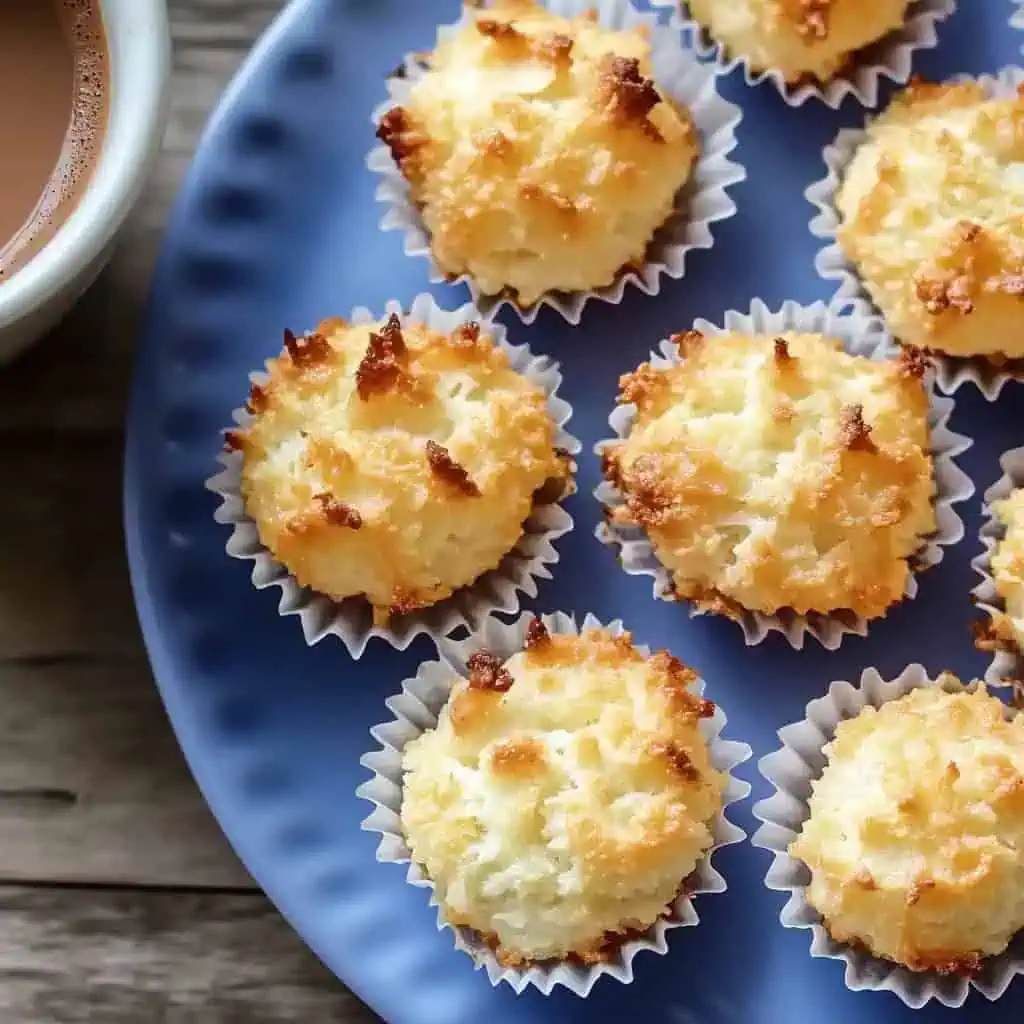
FAQ
Why do my macaroons spread too much during baking?
The butter might be too soft or the batter overmixed. Ensure butter is just at room temperature and mix only until ingredients are combined. You can also chill the filled muffin tin for 15 minutes before baking to help them hold their shape.
Can I make these ahead for parties?
Yes, they keep well for several days at room temperature and can be frozen for up to 3 months. Thaw overnight in the refrigerator for best results. They're actually perfect for make-ahead desserts as their flavor develops nicely after a day.
How do I know when they're perfectly done?
The tops should be golden brown, and a toothpick inserted into the center should come out with a few moist crumbs (but not wet batter). They should feel set but still slightly springy to the touch. Over time, you'll develop a feel for the perfect doneness in your specific oven.
Why are my macaroons too sweet?
Filipino macaroons are traditionally sweet. For less sweetness, reduce condensed milk to 350g and increase eggs by one. You can also balance the sweetness by adding a pinch of salt or serving with unsweetened coffee or tea.
Can I use freshly grated coconut?
Yes, but squeeze out excess moisture first and reduce the condensed milk slightly to maintain proper consistency. Fresh coconut will give a more pronounced coconut flavor but may result in a slightly different texture.
Do I have to use a mini muffin tin, or can I make larger macaroons?
You can use regular-sized muffin tins, but you'll need to adjust the baking time (add about 5-7 minutes). The mini size is traditional and allows for better moisture retention and the perfect ratio of crisp exterior to soft interior.
Can I add food coloring to make these more festive?
Absolutely! Add a few drops of gel food coloring when mixing the wet ingredients. Filipino celebrations often feature colorful variations of traditional desserts.
Why did my macaroons sink in the middle after baking?
This usually happens when macaroons are underbaked or when the oven door is opened too early in the baking process. Ensure your oven is properly preheated and resist checking them until at least 20 minutes have passed.
Are these gluten-free?
Yes, traditional Filipino coconut macaroons contain no wheat flour, making them naturally gluten-free. However, always check your specific ingredients for cross-contamination if serving to someone with celiac disease.
How can I make these less calorie-dense?
While traditional macaroons are indulgent, you can reduce calories by using light condensed milk and reducing the butter to ⅓ cup. The texture will be slightly different but still delicious.
Related
Looking for other recipes like this? Try these:

Filipino Coconut Macaroons
Equipment
- Stand mixer or hand mixer (panghalo) For creaming butter and mixing ingredients thoroughly
- Large mixing bowl (mangkok) For combining ingredients
- Mini muffin tin (molde) For shaping the macaroons
- Mini muffin paper liners (paper cups) To prevent sticking
- Measuring cups and spoons (Panukat) For precise measurements
- Rubber spatula For scraping bowl sides
- Wire cooling rack (palamigan) For proper cooling
Ingredients
- 400 g desiccated coconut niyog na pinahid
- 400 g condensed milk kondensadang gatas
- 1 teaspoon vanilla extract vanilla na pampalasa
- ½ cup unsalted butter room temperature (mantikilyang walang asin)
- ½ cup brown sugar asukal na mapula
- 4 large eggs itlog
Instructions
- Begin by gathering all your ingredients and setting your butter out to reach room temperature - this will take about 30 minutes. Meanwhile, preheat your oven to 180°C (350°F) and line your mini muffin tin with paper cups.
- Once your butter is softened, cream it together with the brown sugar using an electric mixer on medium speed. Keep mixing for 3-4 minutes until the mixture becomes light and fluffy. It should look pale and creamy when ready.
- Break your eggs into the mixture one at a time, beating well after each addition. Pour in your condensed milk and vanilla extract, then mix everything until well combined. The mixture should look smooth and uniform.
- Now add your desiccated coconut gradually, using a rubber spatula to fold it in. Keep folding until all the coconut is evenly distributed throughout the batter. The mixture should be thick but still easy to spoon.
- Fill each paper-lined muffin cup about two-thirds full with your batter. Gently tap the filled muffin tin on your counter twice to remove any air bubbles.
- Place the tin in your preheated oven and bake for 25-30 minutes. You're looking for golden-brown tops - this tells you they're done. Halfway through baking, rotate the pan to ensure even browning.
- When done, remove from the oven and let the macaroons cool in the tin for 5 minutes. Then carefully transfer them to a wire rack to cool completely, which takes about 20-30 minutes. They should feel firm when touched but still have a soft center.
- To store, place in an airtight container. They'll keep at room temperature for up to 5 days, or in the refrigerator for up to 2 weeks. You can also freeze them for up to 3 months - just thaw overnight in the refrigerator when ready to eat.
- Remember: perfectly baked macaroons should have a light golden-brown color on top, be slightly crisp on the outside, and remain moist and tender on the inside. Don't worry if your first batch isn't perfect - each time you make them, you'll get better at knowing exactly when they're done in your oven.
Tips from Lola's Kitchen
- Use room temperature ingredients for better incorporation
- Don't overmix after adding coconut to maintain texture
- Rotate the pan halfway through baking for even browning
- Test doneness by lightly pressing the top - it should spring back
Nutrition
The Story Behind Filipino Coconut Macaroons
The story of Filipino coconut macaroons weaves together centuries of culinary evolution, religious tradition, and colonial influence. While today's Philippine version bears little resemblance to its European ancestors, its roots can be traced back to the tranquil kitchens of 9th-century Italian monasteries, where resourceful monks first crafted almond-based confections that would become known as macaroons.
The term "macaroon" itself reveals this European heritage, derived from the Italian "maccarone" or "maccherone," meaning to crush or beat—a reference to the almond paste that formed the foundation of the original recipes. These early macaroons emerged as a practical solution to religious dietary restrictions, containing no flour or leavening agents, making them permissible during Passover observations.
As trade routes expanded during the Spanish colonial period in the Philippines, European culinary traditions began to merge with local ingredients and tastes. The abundance of coconuts in the Philippine archipelago naturally led to adaptation, with bakers substituting readily available coconut for the more expensive imported almonds. This transformation wasn't merely about ingredient availability—it represented the Filipino talent for adaptation and innovation in cuisine.
The evolution from European-style macaroons to today's Filipino coconut macaroons (locally known as "makaron") showcases the remarkable influence of regional ingredients on colonial recipes. While French macarons evolved into delicate, meringue-based sandwich cookies, Philippine macaroons embraced a heartier, more tropical identity. The addition of condensed milk—another colonial influence—created the distinctively sweet, moist texture that characterizes modern Filipino macaroons.
Today, these beloved treats are fixtures at Filipino celebrations, from fiestas to Christmas gatherings. Local bakeries across the Philippines produce them daily, and they've become a staple of the merienda (afternoon snack) tradition. The recipe's simplicity and reliability have ensured its place in both commercial bakeries and home kitchens, where it continues to evolve with modern variations incorporating uniquely Filipino flavors like ube and pandan.
In many ways, Filipino coconut macaroons embody the nation's culinary philosophy—taking foreign influences and transforming them into something uniquely and proudly Filipino. This dessert stands as a testament to the Philippines' rich history of cultural adaptation and culinary innovation, proving that sometimes the most beloved recipes are those that have traveled the farthest from their origins.
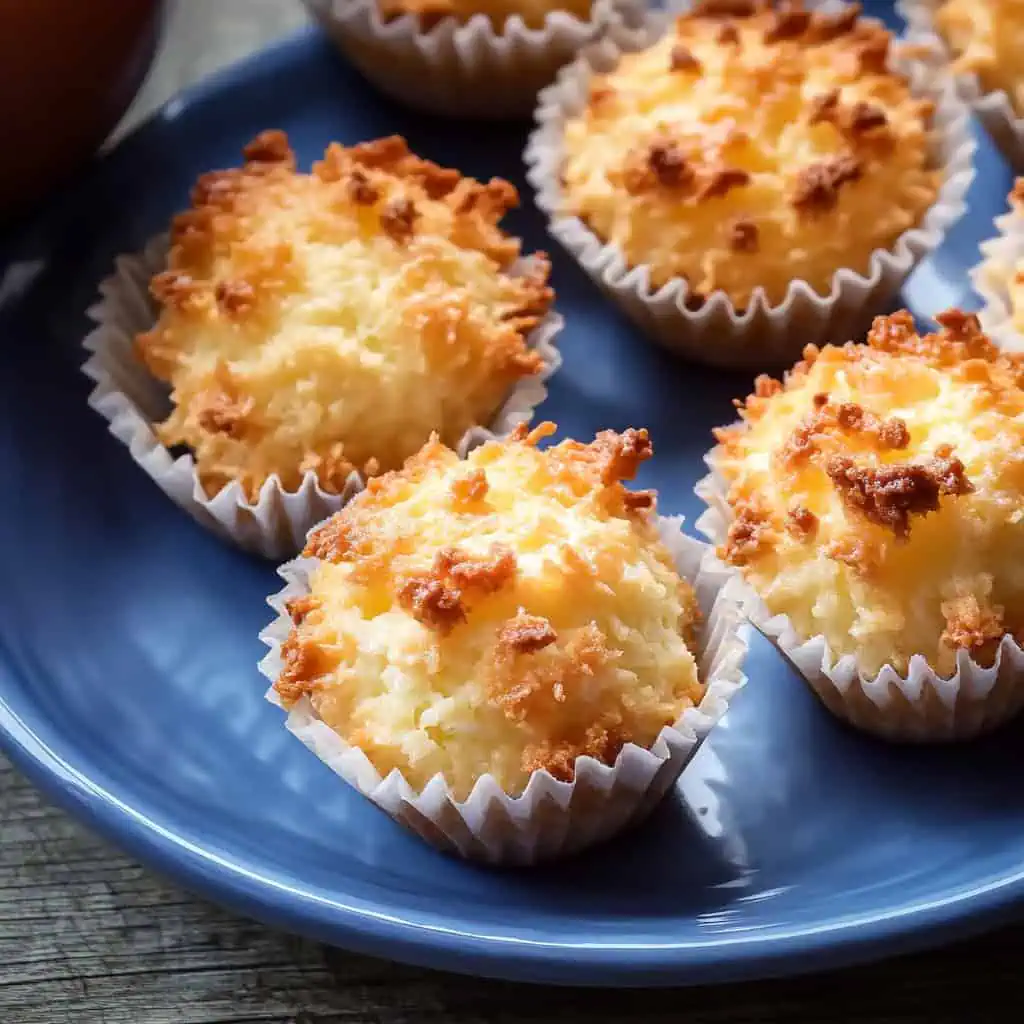






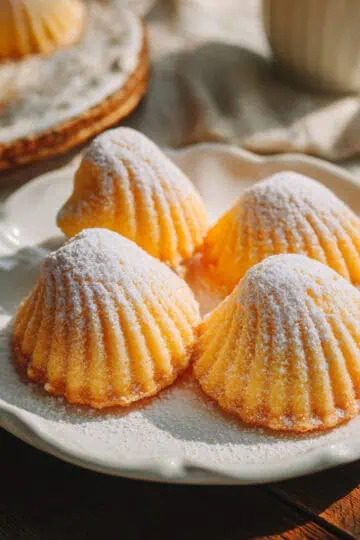
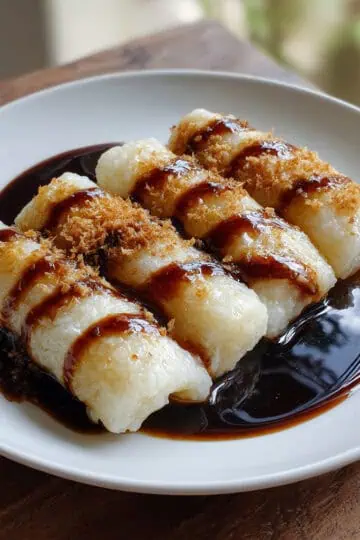
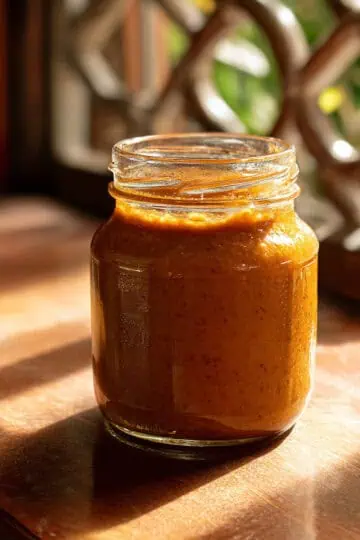
Comments
No Comments